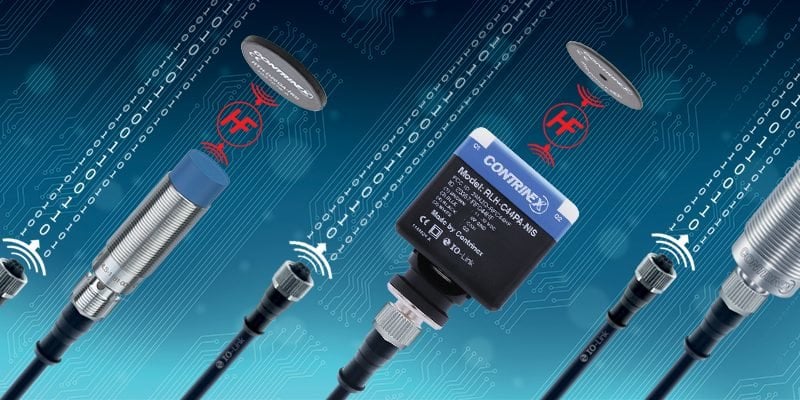www.industryemea.com
14
'19
Written on Modified on
Robust RFID read/write modules with IO-Link
Fast data transmission in harsh environments.

The portfolio of RFID read/write modules with IO-Link interface V1.1 has been extended to include C44 types (40 x 40 mm) with protection class IP68/IP69K. With two operating modes and a selectable “Automatic” mode, they offer a user-friendly design that reduces programming costs, simplifies debugging and supports predictive maintenance. When the read/write modules are used in SIO mode, 2 outputs are available for configuration to different signal sources. Transponder history, alarm flags, password protection and a scan UID function are also available.
In logistics and production applications, RFID tags are widely used for individual identification of components, containers and vehicles. To transmit tag data, read-write modules (RWMs) must often withstand adverse conditions. Contrinex offers a portfolio of particularly robust RWMs in the compact C44 format (40 x 40 mm) with a read/write distance of up to 80 mm. Extensively revised firmware now allows even faster RFID communication at bit rates of up to 26.5 kbit/s to meet the most demanding requirements. IO-Link RWMs use ISO 15693 for communication with the RFID transponder. They are integrated into the automation system via an M12 connector and IO-Link (IEC 61131-9), making them suitable for industrial 4.0 applications. The robust PBTP plastic housing with protection class IP68/IP69K protects the electronics against adverse environmental conditions in the permissible temperature range from -25 to +80°C (-13 to +176°F). This makes the RWM not only suitable for outdoor use, but also for use in hygienic applications with WIP or CIP cleaning.
Fast and user-friendly
In addition to the user-friendly “Automatic Mode”, the RWMs offer the operating modes “Scan UID”, in which only the user ID is read, and “Scan Read/Write”, in which read and write access is possible. This saves programming effort in some applications. An integrated transponder history register, in which transponder and RWM identification and time stamps are stored, facilitates debugging and helps reduce maintenance work. For predictive maintenance, two alarm flags can be set for different parameters, e.g. for the response signal strength indicator (RSSI) or the counter of the time a transponder is within range. This improves the availability of the system. In standard IO mode, two configurable outputs are also available for signals such as “transponder present”, “data transmission OK” or “alarm signals”.
www.contrinex.com

